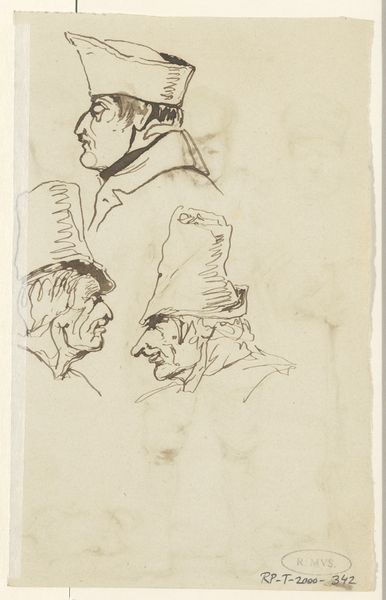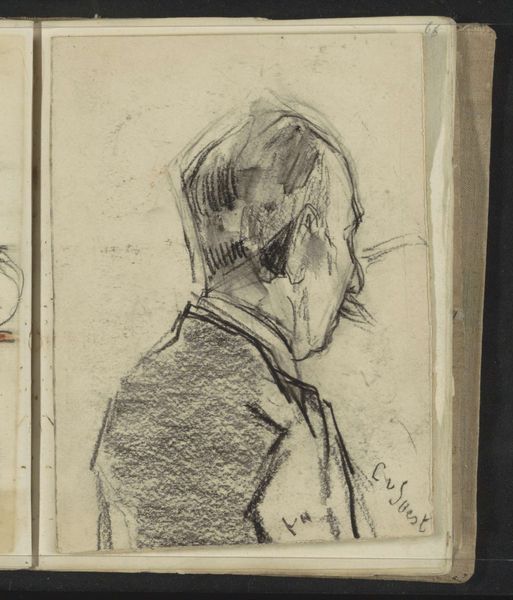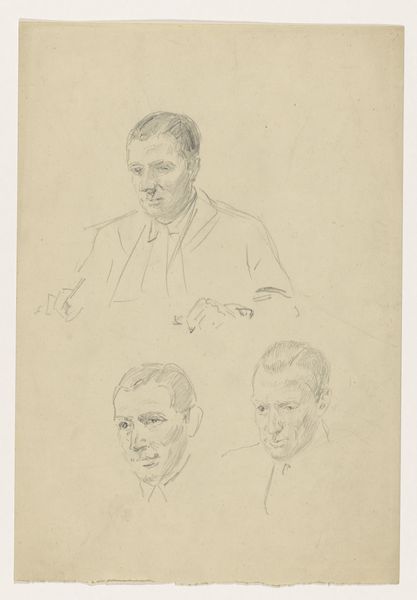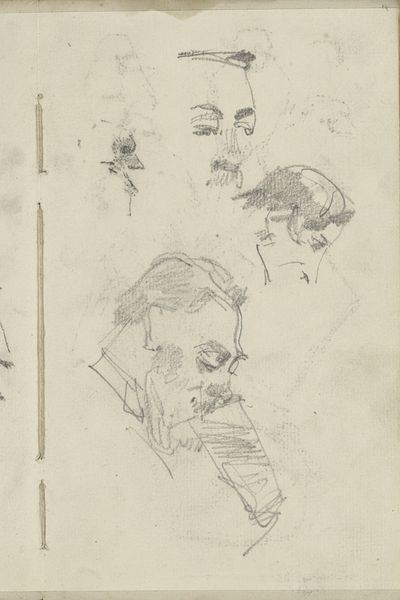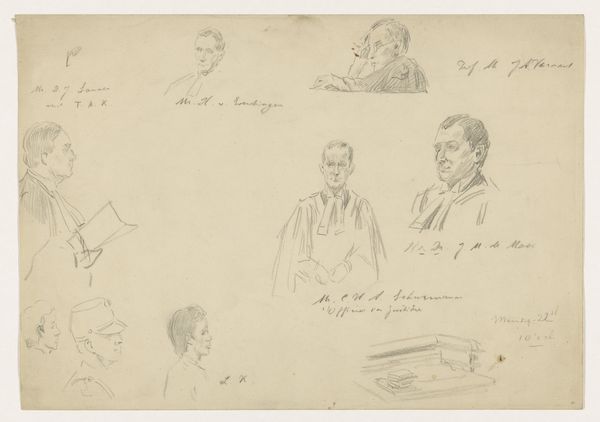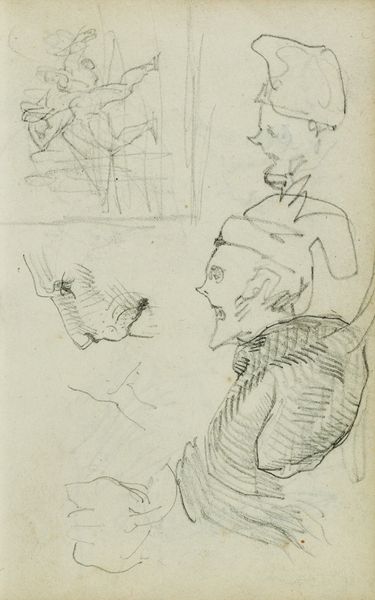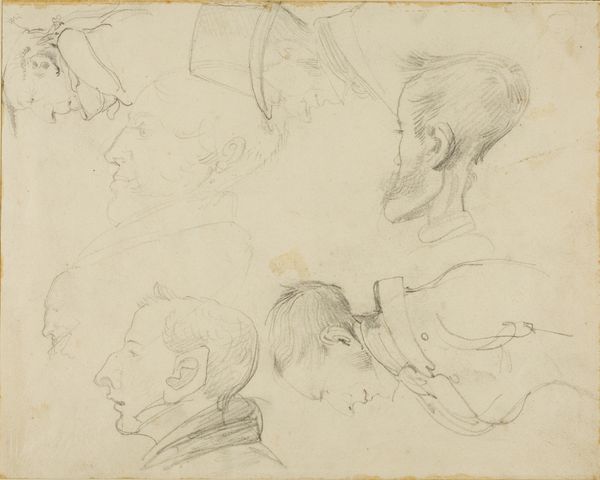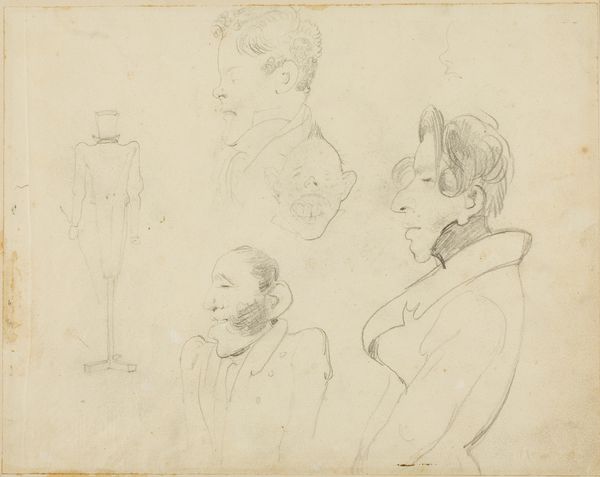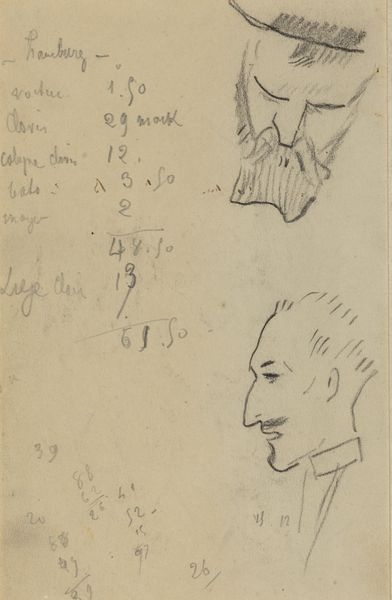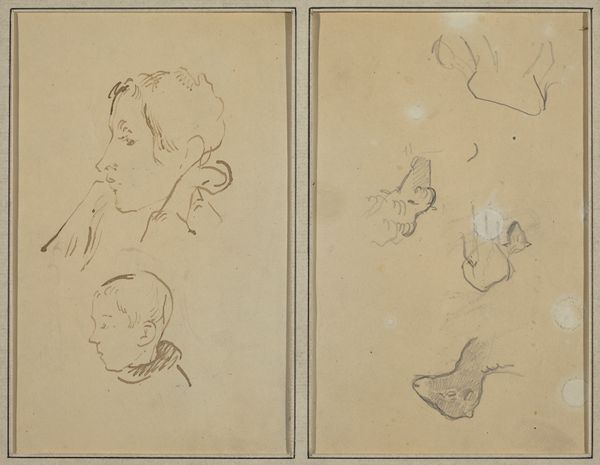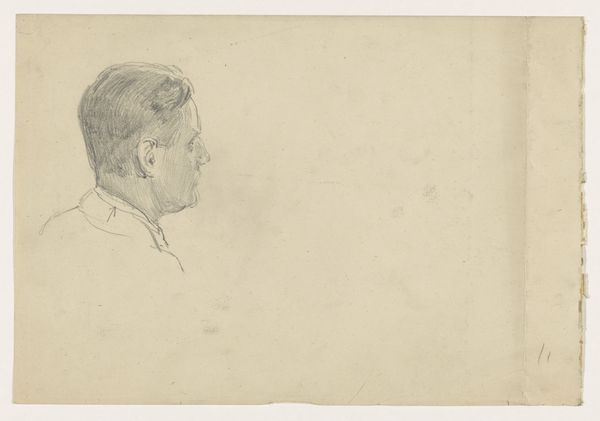
drawing, pencil
#
portrait
#
drawing
#
pencil
#
history-painting
#
realism
Dimensions: 105 mm (height) x 176 mm (width) (bladmaal)
Curator: "Studier af fanger fra Forbedringshuset"—Studies of prisoners from the house of correction—executed in 1833 with pencil on paper by Martinus Rørbye. What strikes you most at first glance? Editor: Well, the starkness of it. There's a sense of vulnerability in these men being observed and documented. I can feel a chilling lack of privacy in their condition, in their presentation. Curator: It’s precisely this social critique that Rørbye captures so powerfully. He uses realism not just to depict, but to implicate us in the prisoners' circumstances. Consider that these aren’t just drawings; they're a commentary on a justice system that renders people as objects of study. What do you read into that? Editor: I think that the way the heads are drawn, arranged almost like specimens—the symbolism can be brutal, especially when paired with the more formal, upright portrait of "Frederick Giüdersen" on the same sheet. Is he significant to the study somehow? Curator: Frederick Giüdersen may be one of the prison directors—the name below the upright portrait makes me wonder. His composed depiction forms a disturbing contrast against the recumbent figures. This composition seems to deliberately place responsibility and dehumanization face to face. The contrast speaks volumes about social position. Editor: Yes, absolutely. And I see, too, how the choice of pencil amplifies the drawing's raw feel. There’s no attempt to beautify; the lines are stark, direct, unflinching, aren't they? Curator: Quite so. It refuses to romanticize, doesn't it? By foregoing any sense of glamour, it directs us to grapple with the implications of how society treats its marginalized individuals. Rørbye pushes us to look squarely at the power structures. Editor: So, beyond this being a sketch or study, it challenges us to question the faces and forms that those in power make. Curator: It certainly does. I would simply suggest that this artwork shows us a fragment of social history, rendered with sharp edges and deliberate contrasts. Editor: I concur; it is the power of symbols here that speaks, as they draw out a deep sense of discomfort and force critical perspectives on our collective memory.
Comments
No comments
Be the first to comment and join the conversation on the ultimate creative platform.

